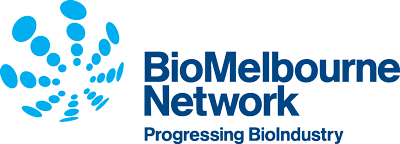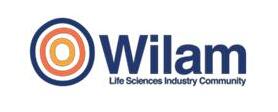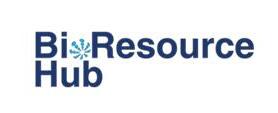Nature has release a careers guide supplement foccussing on Melbourne’s biomedical sector.
Melbourne’s institutions cluster into discrete geographic hubs, with a solid culture of collaboration and an emphasis on biomedical research. Learn more about the area’s leading scientific entities and their ties to each other.
As part of the supplement there is an article on Melbourne.
When Irish-born materials scientist Cathal O’Connell finished his undergraduate degree at Trinity College, Dublin, in 2008, he started looking for opportunities to apply his knowledge to biological challenges. “Australia was the obvious place to come,” he says.It was a pragmatic move. With a total population of approximately 24.5 million, Australia is home to around only 0.3% of the world’s population — but it produces 2.6% of the high-quality research, with a particular focus on biomedicine.
And Australia’s weightiest contributor to biomedical research is Melbourne. Two of the country’s top three universities for life science, Monash University and the University of Melbourne, are based here (see ‘Ahead of the pack’). “In biomedical research, only two cities in the world, Boston and London, would compare to Melbourne,” says Ian Smith, vice-provost for research and research infrastructure at Monash, who moved from the United Kingdom to Australia in 1984.
Besides its two biggest universities, Melbourne boasts six others with their own noted research strengths, along with renowned medical research institutes and several large research hospitals. These institutes — employing more than 10,000 scientists, clinicians and technical staff — are generally clustered into geographic hubs, fostering easy collaboration (see ‘Clustering innovation’). The state of Victoria consistently wins around 45% of Australia’s National Health and Medical Research Council funding. (Editors note: actual range over different yrs is 40-43%) “That tells you something about the quality of research here,” says Smith. Core strengths include cancer, infection and immunity, rational drug design, and medical devices, he says, offering good career opportunities for young researchers. Historically, Melbourne has lagged behind at cashing in on those strengths. “We don’t have a lot of the industries that should be coming out of universities like Monash, so career opportunities outside academia are a little limited,” Smith says. “But the culture is changing.”
Medical devices is one area in which Melbourne researchers can find significant commercial role models — most famously Cochlear Limited, which commercialized the ‘bionic ear’, a hearing implant developed by Graeme Clark at the University of Melbourne. This device, which connects electrodes to auditory neurons, was a highly collaborative effort. “You had physicists and engineers, biologists and materials scientists, all working together to solve a problem,” says O’Connell. Today, O’Connell manages a collaboration of his own: BioFab3D, a recent addition to Melbourne’s biomedical research scene. Launched in late 2016, BioFab3D is pioneering the 3D printing of living cells to replace damaged or diseased tissues. Supported by the University of Melbourne, O’Connell’s lab is located at St Vincent’s Hospital, and is also co-funded by the University of Wollongong in New South Wales, the Royal Melbourne Institute of Technology University and Swinburne University of Technology.
“This lab is a small pathfinder for what will come later,” says O’Connell, pointing to plans for a new Aus$180 million (US$135 million) facility devoted to biomedical engineering called the Aikenhead Centre for Medical Discovery. The centre will focus on exactly the kind of collaboration that O’Connell was hoping to find when he moved to Melbourne: biomedicine meeting materials science. He cites an example from 2015, when Spanish surgeons needed a replacement ribcage for a patient with a tumour growing in his chest wall. The scientists asked Melbourne firm Anatomics to design it, uploading their patient’s computed tomography scans directly to the company. The ribcage was printed in Clayton, at the centre for the Commonwealth Scientific and Industrial Research Organisation, the national research agency
Science isn’t the only thing to recommend Melbourne. The city has topped The Economist’s index of the world’s most liveable cities for the past six years.
If you look up almost anywhere in Australia, you’ll be greeted by a clear, radio-quiet night sky, says Alan Duffy, an astronomer at Swinburne who moved to Australia in 2009 from the Jodrell Bank Centre for Astrophysics in Manchester, UK. “Australia always seemed like this incredible exotic land,” Duffy says. “Scientifically, at least in astronomy, it is one of the top countries.” Last year, Swinburne won Australian Research Council funding to establish a new Centre of Excellence for Gravitational Wave Discovery. And, with state government support, Swinburne and Melbourne universities have installed the Southern Hemisphere’s first dark-matter detector — housed in Victoria in a gold mine, a kilometre underground, to protect it from interference from atmospheric particles. Swinburne’s strength in the emerging field of data science will be crucial for the project. The astronomers need computer scientists to develop ways to handle astronomically sized data sets. “It’s given rise to a really exciting new discipline — the skills used to explain exploding stars can be used to understand issues such as traffic management,” Duffy says. “Melbourne prides itself on creation and creativity, and you can see that — from the artistry we put into preparing coffee, to the way people dress, to the fact that public talks on the most esoteric scientific matters are sell-outs.” “Melbourne is a melting pot of ideas and a very innovative place to live and work in,” O’Connell agrees. “It’s a great place to live in general — there’s a great art scene, a music scene, a beautiful seafront.” “I’ve known many astronomers who would rather leave astronomy than leave Melbourne,” Duffy says. “I always look forward to coming back here.”
Interactive Research output Map
Also as part of this there is a interactive map of Melbourne biomedical institutions demonstrating their local and international collaborators and metrics using the Nature Index Track (note this is based using only Nature Publishing journal articles published between 1 Feb 2016 to 31 Jan 2017)
Map is available here



